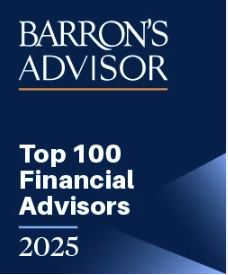
September 15, 2025 – Carver Financial Services is proud to announce that Randy Carver, President and Founder, has been ranked #17 in the nation on Barron’s prestigious Top 100 Independent Financial Advisors list for 2025.
This marks another milestone in Carver’s distinguished career and reflects his continued commitment to helping clients simplify their financial lives, so they can focus on what matters most. The Barron’s ranking, which evaluates advisors on assets under management, revenue, regulatory record, and quality of practice, recognizes the highest-performing independent advisors nationwide.
“Being named one of the top independent advisors in the country is truly an honor,” said Randy Carver. “This recognition reflects the hard work of our entire team and the trust our clients place in us every day. We remain committed to providing personalized, objective guidance to help clients achieve financial confidence and clarity.”
Under Randy’s leadership, Carver Financial Services has consistently focused on holistic financial planning, investment management, and wealth preservation. His innovative strategies and commitment to transparency have earned him a loyal client base and a reputation for integrity in the industry.
The ranking reflects Randy’s ability to navigate complex financial landscapes and his success in adapting to changing market conditions, ensuring that clients’ needs are always prioritized.
With over $3.3 billion in assets under management (as of September 2025), Carver Financial Services has built a reputation for delivering client-centered planning with a focus on long-term relationships, transparency, and service excellence.
The 2025 Barron’s list is one of the most respected rankings in the financial industry, shining a spotlight on those advisors who lead the way in delivering exceptional outcomes for their clients.
To view the full Barron’s Top 100 Independent Advisors list for 2025, visit www.barrons.com.
For more information about Randy Carver and Carver Financial Services, please visit www.carverfinancialservices.com or contact us at (440) 974-0808.
For the full award, visit 2024 Top 100 Independent Advisors by Barron’s (barrons.com).
About Carver Financial Services
Carver Financial Services is a leading financial advisory firm dedicated to providing comprehensive wealth management solutions. With a focus on personalized service, the firm offers tailored financial planning, investment management, and retirement strategies to help clients navigate their financial journeys.
Barron’s Top 100 Independent Advisors, 2025. Barron’s is a registered trademark of Dow Jones & Company, L.P. All rights reserved. The rankings as of 9/15/2025 are based on data provided by 625 applications and include qualitative and quantitative criteria. Time period upon which the rating is based is from 6/30/2024 to 6/30/2025, and was released on 9/15/2025. Data points that relate to quality of practice include professionals with a minimum of 7 years financial services experience, acceptable compliance records (no criminal U4 issues), client retention reports, charitable and philanthropic work, quality of practice, designations held, offering services beyond investments offered including estates and trusts, and more. Advisors are quantitatively rated based on varying types of revenues produced and assets under management by the financial professional, with weightings associated for each. Investment performance is not an explicit component because not all advisors have audited results and because performance figures often are influenced more by clients’ risk tolerance than by an advisor’s investment picking abilities. This ranking is not based in any way on the individual’s abilities in regards to providing investment advice or management. The ranking may not be representative of any one client’s experience, is not an endorsement, and is not indicative of an advisor’s future performance. Neither Raymond James nor any of its Financial Advisors pay a fee in exchange for this award/rating. Compensation provided for using the rating. Barron’s is not affiliated with Raymond James.



 May 13, 2025
May 13, 2025 











